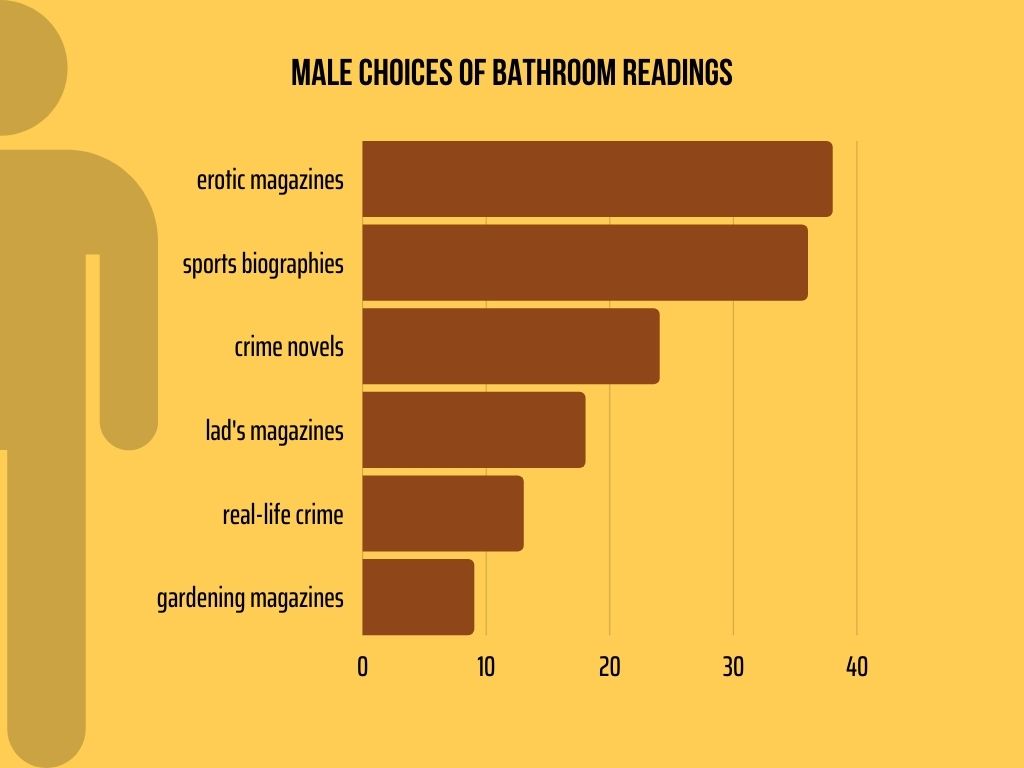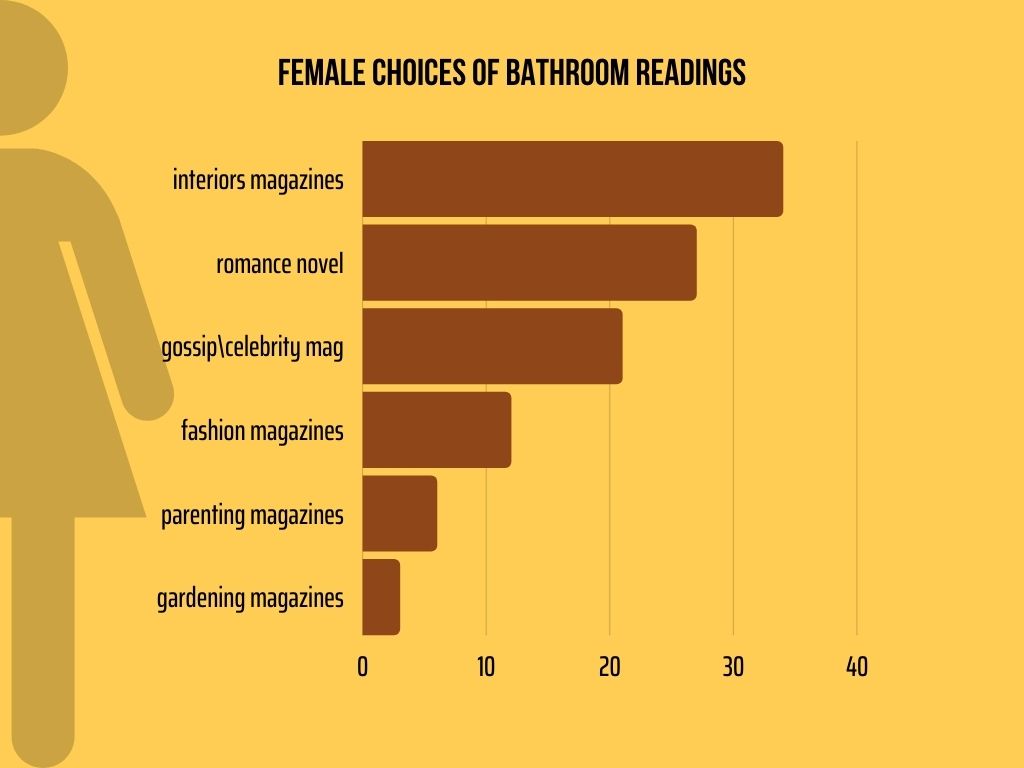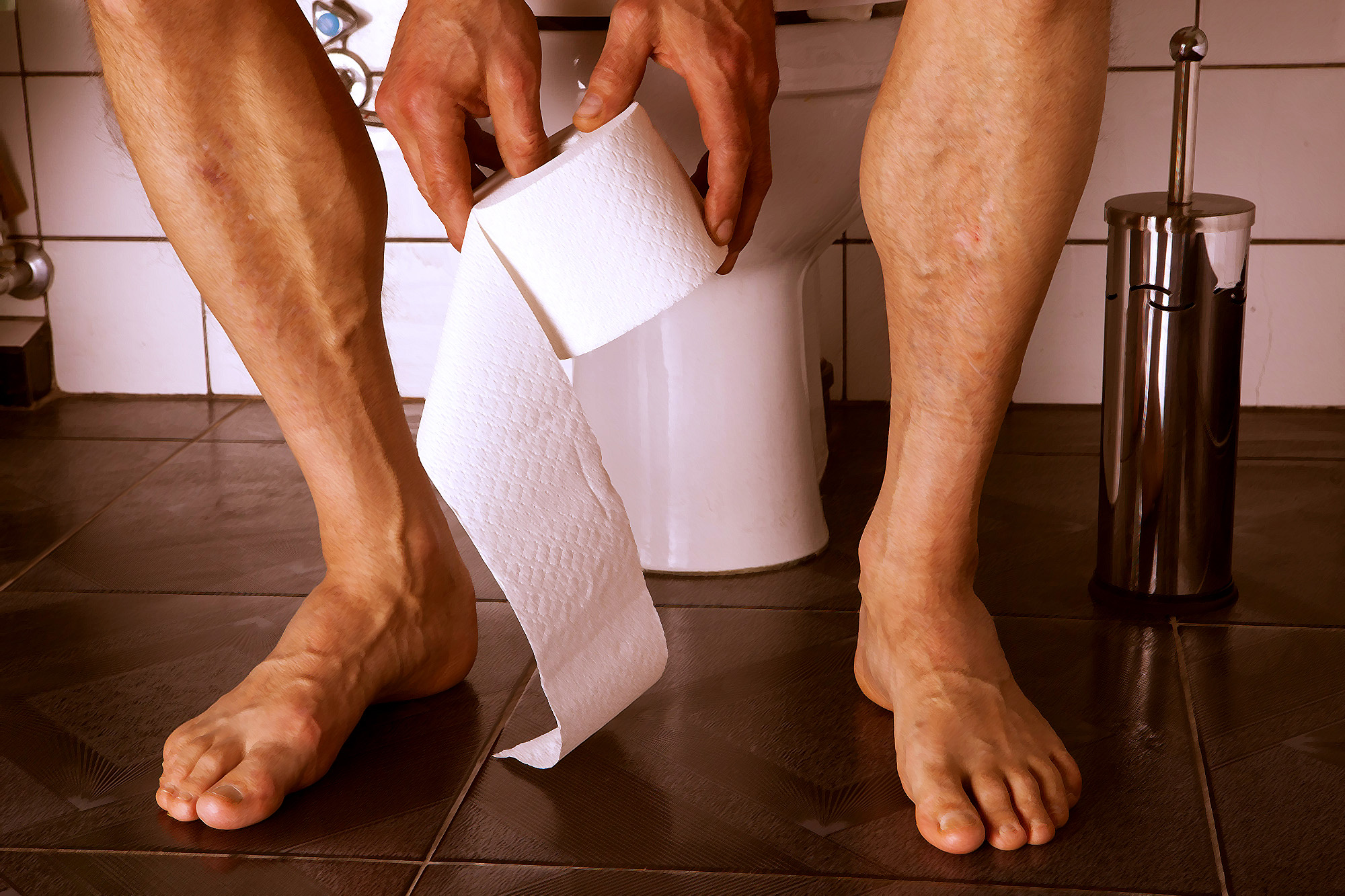Sometimes going to the toilet stimulates other activities
People usually say that men take longer than women to poo. Is it true? And is it a problem taking longer to do it?
Time spent in the toilet is not always related just to the pooping process because people also tend to do other things while sitting on the bowl. You could say there may be differences between men and women but they are not so strong.
Anyway, men appear to spend more time sitting on the toilet according to an online survey by a bathroom retailer that suggested men spend up to 14 minutes a day compared with women, who spend almost 8 minutes a day, although this survey is not scientific evidence.


What we surely know is that food takes longer to travel through the intestines in women than in men. Women are also more likely to suffer from constipation related to irritable bowel syndrome than men. So, you’d expect women to take longer to poop but this is not the case, even if you take into account differences in fiber consumption between men and women.
Instead, the defaecation time is heavily influenced by the mucus lining the large bowel. This mucus makes the bowel slippery and easier for the stools to be expelled but there’s no evidence this mucus lining is different in men and women.
In one study, healthy adults take an average of 2 minutes when sitting, but only 51 seconds when squatting with no differences between men and women, whether sitting or squatting.
So, what’s the point? If apparently there is no difference in time between men and women during defecation, why do men seem to spend more time there?
To answer this question we should consider that the time spent in the toilet is not completely used just to poop. Time spent includes other activities while sitting which often accounts for more than the time used to poop. People usually read while sitting on the bowl, and men seem to read more than women.
A study of almost 500 adults in Israel found almost 64% of men regularly read on the toilet compared with 41% of women. The longer people spent on the toilet, the more likely they read. However, this study was conducted in 2008, so now you would probably expect adults to be reading or playing games on their smartphones rather than reading paper books or magazines.
However, people might also be sitting longer on the toilet for some temporary relief or relaxation from the stress of life and the toilet seems the only place where to find time and peace for themselves.
One poll found that 56% of people find sitting on the toilet relaxing, and 39% a good opportunity to have “some time alone”. Another online survey revealed that 1 in 6 people reported going to the toilet for “peace and quiet”. Although these are not scientific studies, they offer useful insights into a social phenomenon.
Nevertheless, there can be medical reasons for a prolonged defecation time, and consequently, a long time sitting on the toilet.
An anal fissure (a tear or crack in the lining of the anus) can make defecation a painful and long process. These fissures are just as common in men as in women. Obstructive defecation, a disease where people cannot empty the rectum properly, is a common cause of chronic constipation. This is more common in middle-aged women instead.
In a Turkish study, spending more than 5 minutes on the toilet was associated with hemorrhoids and anal fissures. Another study from Italy noted the longer the time people spent on the toilet, the more severe their hemorrhoids were.
One theory behind this prolonged sitting suggests an increase in pressure inside the abdomen. This leads to less blood flow into the veins of the rectum when passing a bowel motion, and ultimately to blood pooling in the vascular cushions of the anus, so hemorrhoids are more likely to develop.
In addition to the usual advice about increasing the amount of fiber in your diet and ensuring you drink enough water, it would be sensible to limit the amount of time spent on the toilet. Different researchers recommend a different upper limit. While others recommend the SEN approach:
- Six minutes of toilet sitting time maximum;
- Enough fiber (eating more fruit and vegetables, and eating whole grains);
- No straining during defecation.
However, we all know that reading or relaxing while on the bowl can’t be easily replaced. Sometimes the bathroom is the only place where we can spend time with ourselves without being disturbed or interrupted. So a compromise would be appropriate. Maybe allowing yourself a prolonged time once or twice a week.
Source theconversation.com

